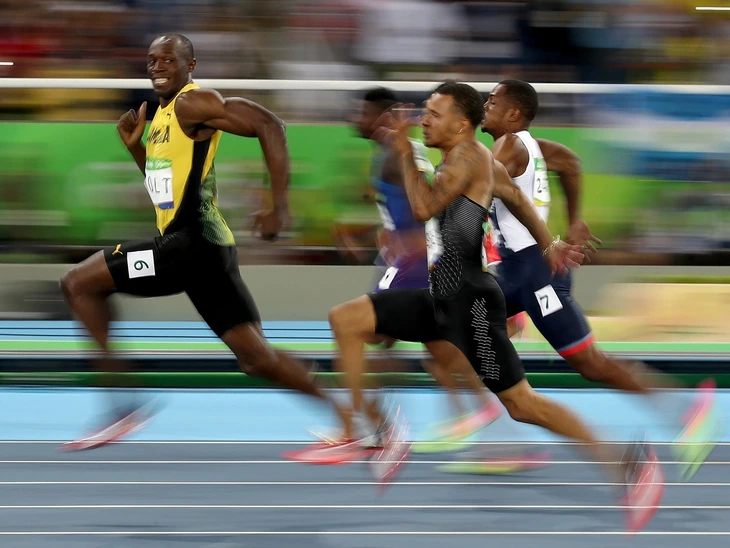
Bolt (left) is far ahead of the rest of the speed racers - Photo: WR
No one can reach Bolt's speed.
16 years have passed, and no one has reached that milestone. 9.58 seconds has become the benchmark representing the limit of human speed.
Bolt's achievement is considered untouchable because of the huge gap with the rest.
Let's list some of the big names after Bolt. That is Yohan Blake, his Jamaican teammate, who once clocked 9.69 seconds. Tyson Gay of the US also reached 9.69 seconds; Asafa Powell once held the world record at 9.72 seconds; Christian Coleman - the 60m record holder - was once expected to have a fast start but his best was 9.76 seconds.
Recently, Fred Kerley, Noah Lyles or young talent Letsile Tebogo have not been able to break below 9.7 seconds. Since 2012, the world has not recorded a record surpassing the 9.74 second mark.
It is worth noting that in the past 16 years, the marathon record has changed hands 8 times. But the sprint record remains the same, forcing the sports world, as well as the scientific community, to step in to answer the question "how fast can a human run?".
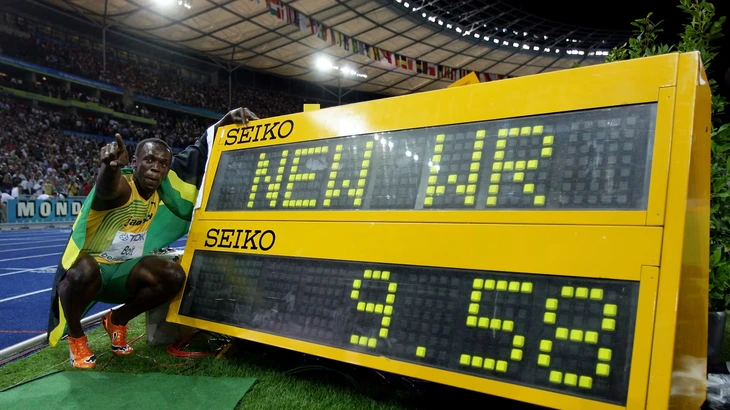
9.58 seconds is considered the limit of human speed to date - Photo: SK
In 2025, two researchers, John Einmahl and Yi He from Tilburg University and the University of Amsterdam, published an analysis of thousands of competition results from 1991 to 2023.
The results showed that the limit of what is possible for men in the 100m is 9.56 seconds, and it is very unlikely that anyone will beat 9.49 seconds. “This means that Bolt has brought humanity close to the ultimate speed boundary,” the report said.
Previously, Mark Denny, professor of biology at Stanford University, also made similar comments.
In an analysis published in the journal Science Focus , he argued that a time under 9.48 seconds would be nearly impossible based on natural talent alone.
Physiological limits of muscles and tendons, the ability to contract muscles and the force exerted on the ground are factors that are difficult for humans to change.
Denny compared 100m performance data from the early 20th century to the present and found that the speed curve was approaching a natural “flat” rather than constantly increasing.
Another line of research looks at the mechanics of running. The paper “How fast can a human run?” published in New Studies in Athletics, No. 4, 2012, edited by Jeremy Richmond, examines the relationship between speed, ground contact time, and pedaling force.
Accordingly, if humans can shorten the landing time to 70 milliseconds and simultaneously increase pedaling force, the theoretical achievement can reach 9.27 seconds.
However, the authors admit that no athlete has met those conditions in reality. This is just a hypothetical scenario, and the path to 9.27 seconds may be far away.
Will technology win?
In addition to biological factors, the athletic world is also constantly looking for advantages from technology and training.
New generation running shoes with carbon plates and ultra-light materials have changed the face of middle and long distances, but at 100m, efficiency is only measured in hundredths of a second, not enough to create a breakthrough.
Modern tracks are designed to provide better feedback, combined with high-speed cameras and biosensors to optimize every step of starting, accelerating, and maintaining speed. Top teams like the US, Jamaica, and England have poured money into biomechanical analysis, but the gap has not been significantly shortened.
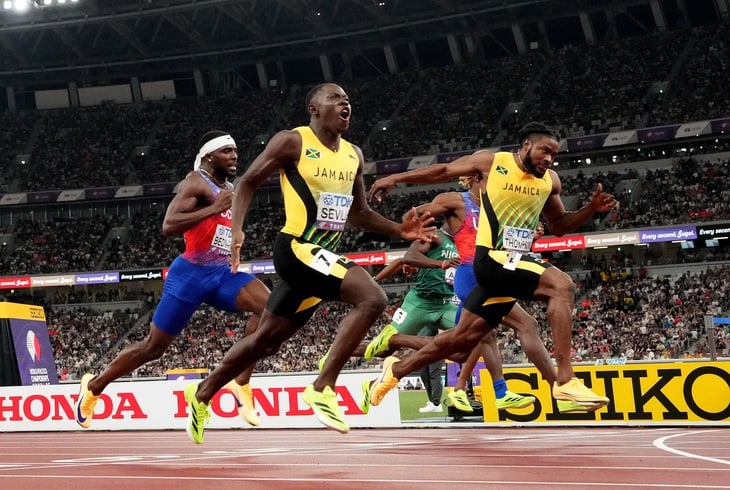
The 100m race at the recent world championships also failed to bring the 100m time below 9.7 seconds - Photo: REUTERS
Another often overlooked factor is the mentality. Bolt races with a relaxed demeanor, even smiling on the track. He is not obsessed with records, but runs with complete ease.
Meanwhile, the next generation of athletes are always compared and pressured to “surpass Bolt”. This mentality makes them tense, affecting their ability to reach maximum speed. Just recreating Bolt’s mental state is almost impossible.
Usain Bolt can be considered a "mutant" in the history of athletics: 1.95m tall but still maintains a fast step frequency, a stride length of nearly 2.7m, combined with rare strength and flexibility.
His combination of natural talent, impeccable technique and relaxed mentality has helped him set a standard that the world has yet to surpass. When combined with scientific research showing that 9.58 seconds is close to the limit, the record becomes even more solid.
Source: https://tuoitre.vn/9-58-giay-phai-chang-la-cuc-han-toc-do-cua-loai-nguoi-20250916114646521.htm


![[Photo] General Secretary To Lam attends the 8th Congress of the Central Public Security Party Committee](https://vphoto.vietnam.vn/thumb/1200x675/vietnam/resource/IMAGE/2025/10/4/79fadf490f674dc483794f2d955f6045)

![[Photo] Bustling Mid-Autumn Festival at the Museum of Ethnology](https://vphoto.vietnam.vn/thumb/1200x675/vietnam/resource/IMAGE/2025/10/4/da8d5927734d4ca58e3eced14bc435a3)


![[Photo] Solemn opening of the 8th Congress of the Central Public Security Party Committee, term 2025-2030](https://vphoto.vietnam.vn/thumb/1200x675/vietnam/resource/IMAGE/2025/10/4/f3b00fb779f44979809441a4dac5c7df)





















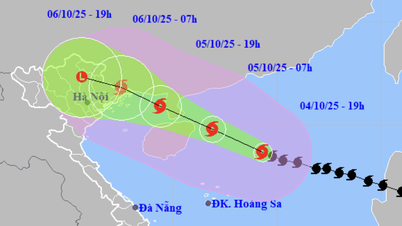






























![[VIDEO] Summary of Petrovietnam's 50th Anniversary Ceremony](https://vphoto.vietnam.vn/thumb/402x226/vietnam/resource/IMAGE/2025/10/4/abe133bdb8114793a16d4fe3e5bd0f12)

![[VIDEO] GENERAL SECRETARY TO LAM AWARDS PETROVIETNAM 8 GOLDEN WORDS: "PIONEER - EXCELLENT - SUSTAINABLE - GLOBAL"](https://vphoto.vietnam.vn/thumb/402x226/vietnam/resource/IMAGE/2025/7/23/c2fdb48863e846cfa9fb8e6ea9cf44e7)















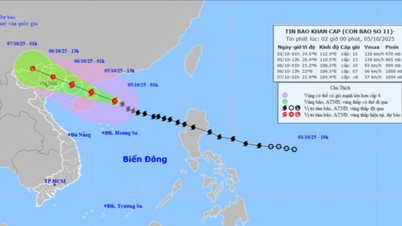

















Comment (0)